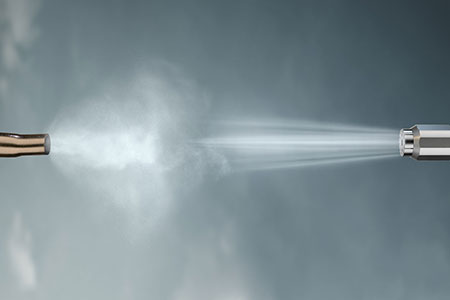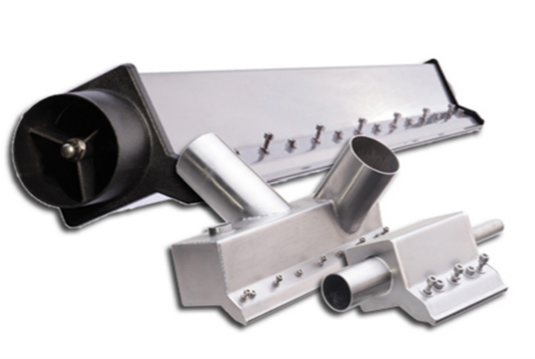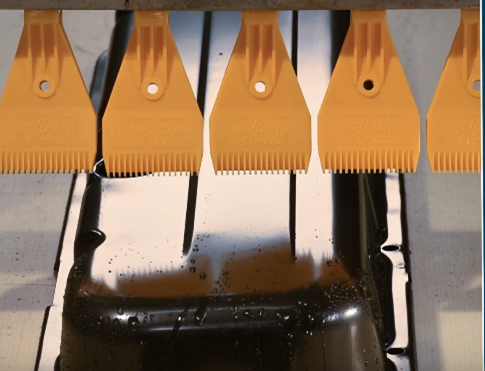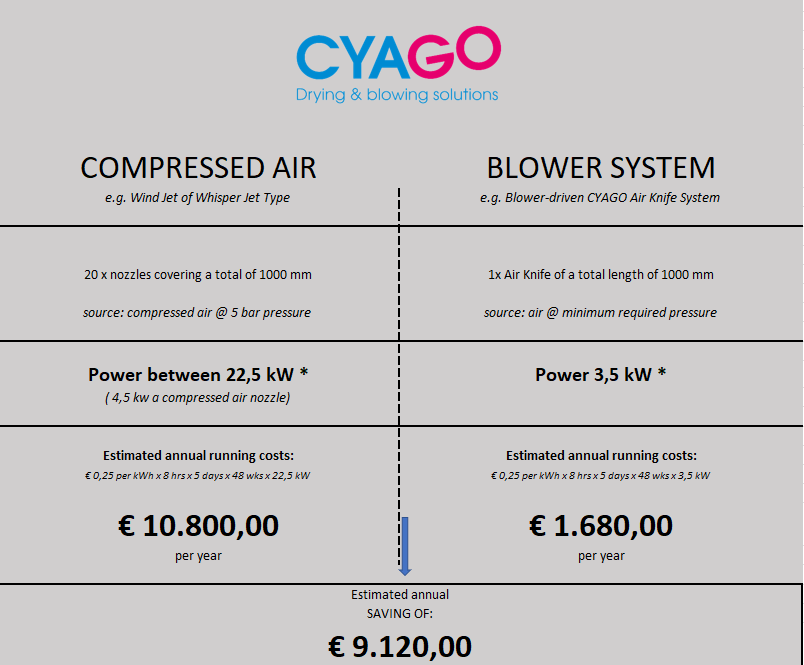Compressed air versus blower driven systems by continuous air applications.
- Related Solution:
- RONAIR® Drying & blowing technology

If your business has applications which needs a continuously airflow, such as drying, cooling, cleaning like blow-of water, dust, coolant and other contaminants, the choice of your air system is very important. Either compressed air or blower driven systems can deliver the necessary air volume. Both systems, air compressors working with high-pressure and blower driven systems operating at a low-pressure, have implications for
- Energy cost
- Cost management
- Application particulars
- Security issues (cfr. “The 5 biggest dangers of compressed air”, an other story on our site)


Energy cost
We compare a simple system with 20 compressed air nozzles and a blower driven air knife both with a length of 1m. For the air knife we have a slot of 1mm and for the compressed air system we use Wind jets of Whisper Jet types.

In this application with continuous flow, the blower driven system is always the more energy efficient choice. The blower driven installations reduce energy costs up to 80% over previous compressed air systems. An ROI of less than 8 months is generally the rule for blower based systems due to the significant energy savings. Only in applications where the need for air is sporadic or in short bursts, the amount of energy consumed by a compressed air system is less and the compressed air system can be the energy efficient solution.
A general rule for estimating the compressed air is using the calculation for 1m³ = 0,11 kW.
Cost management
As a result of the process needed to compress air, a great deal of electricity is needed to compress, cool or dry, and store. It is estimated that the overall efficiency of a compressed air system can be as low as 10-15%. It is even estimated that the average business that utilizes compressed air units dedicates around 30% of their electricity budget on compressed air. Either through leaks, poor maintenance, poor planning and poor control, even more energy can be wasted. A 3 mm leak in a compressed air system will generate considerable costs over a year in wasted electricity. If you look online, you will find many sites that publish data on “compressed air through open pipes”. Look at data for a diameter of 3 mm. Compressed air systems also need a great deal of maintenance. Bearings need to be greased, air/oil separators and heat exchangers/coolers need to be cleaned, and drains and cooling water need to be monitored (for compressed air systems). Air blowers require relatively little maintenance because no oil or water is required in the system and the electrical motors of the blowers have most of the time bearings which are greased for life.
Application particulars
Applications that utilize continuous flow favor blower driven systems as they are by-far more efficient. Applications requiring intermittent air bursts or applications which allow the air to be cycled on and off when needed, are better candidates for a compressed air system. The speed and nature of an application must be taken into consideration when choosing a system.
Blow-off applications
Compressed air systems:
- it causes flying debris which dan harm the operator and nearby workers
- It can be harmful to health, it can contain pollutants and contaminants
- If accidentally blown into the mouth, compressed air can rupture the lungs, stomach, or intestines.
- It releases hot emissions, especially for gas-powered and diesel-powered compressors.
- Needs pressure vessels and appendages, with certificates of Notified Body
Blower driven systems:
- Low pressure, high-velocity air flow is suitable for blow-off applications as they have a low energy consumption and almost no waste costs.
- Air knives are also much safer as they produce air under high velocity but low pressure.
Clean & Drying applications:
Compressed air systems:
- Can be the best system if intermittent air bursts are required.
- Oil and/or water can be effected in the airstream, affecting drying applications
- High costs to run continuously, difficult to ensure precision needed for moisture regulation
Blower driven systems:
- Concentrated air flow, able to run continuously at low cost and with energy efficiency.
- By being both free of oil and completely dry, air knives are also much cleaner and require less cleaning and maintenance costs.
- Air flow able to be easily directed, to create an laminar air flow that adheres to surfaces, meaning it can remove or regulate moisture on a surface as needed.
Summary
When deciding on an air delivery system for your application there are many factors to consider: The electricity and energy costs, noise considerations, system maintenance, operating costs and healthy considerations. Production rates and output can be negative choosing the wrong system. It is important to research all the available options before committing to buy. No two applications are the same and what works for one may not work for you.
For a continuous air application as drying and blowing off, CYAGO considers a blower driven system and where applicable, CYAGO may also perform an ROI analysis on your system.
Compressed air versus blower driven systems by continuous air applications
Dedication, diligence and passion are synonymous with our ‘YOBO’ spirit (“You Only Blow Once”).